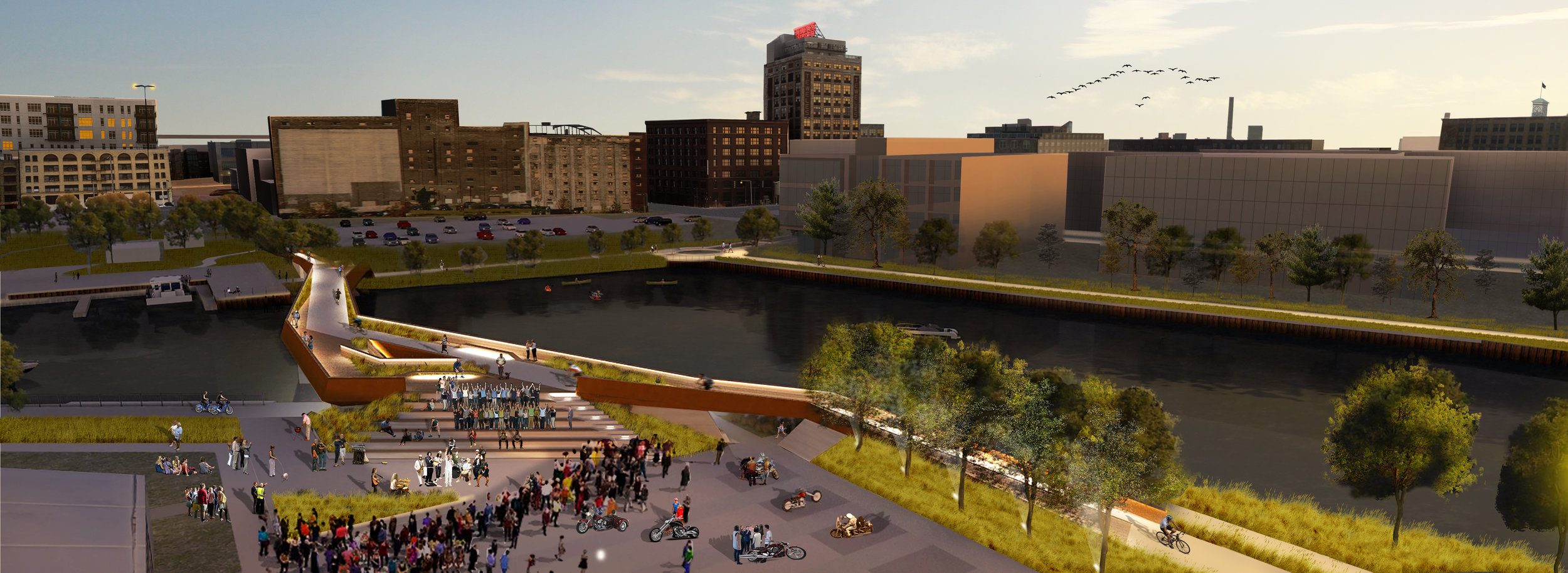
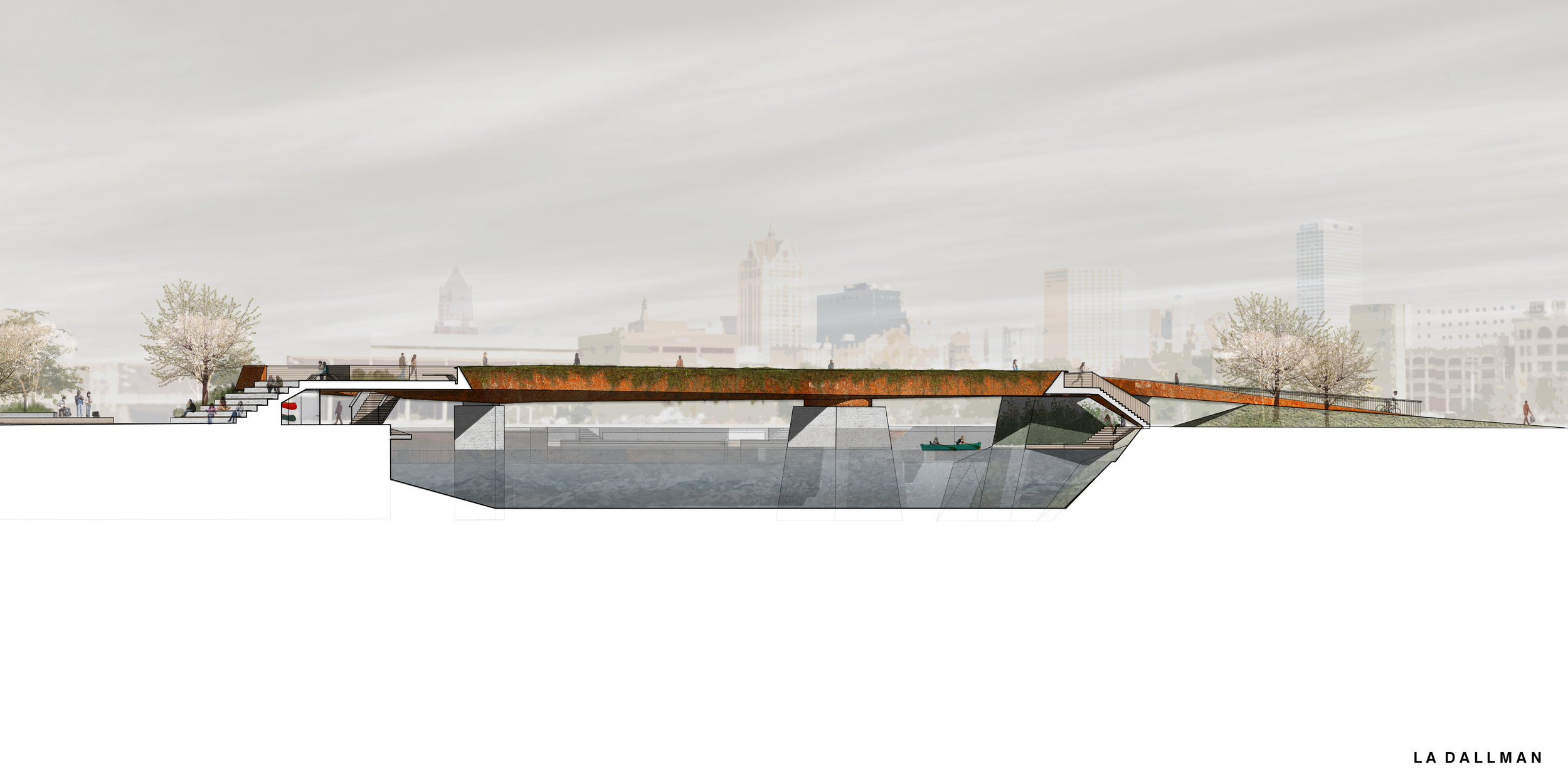
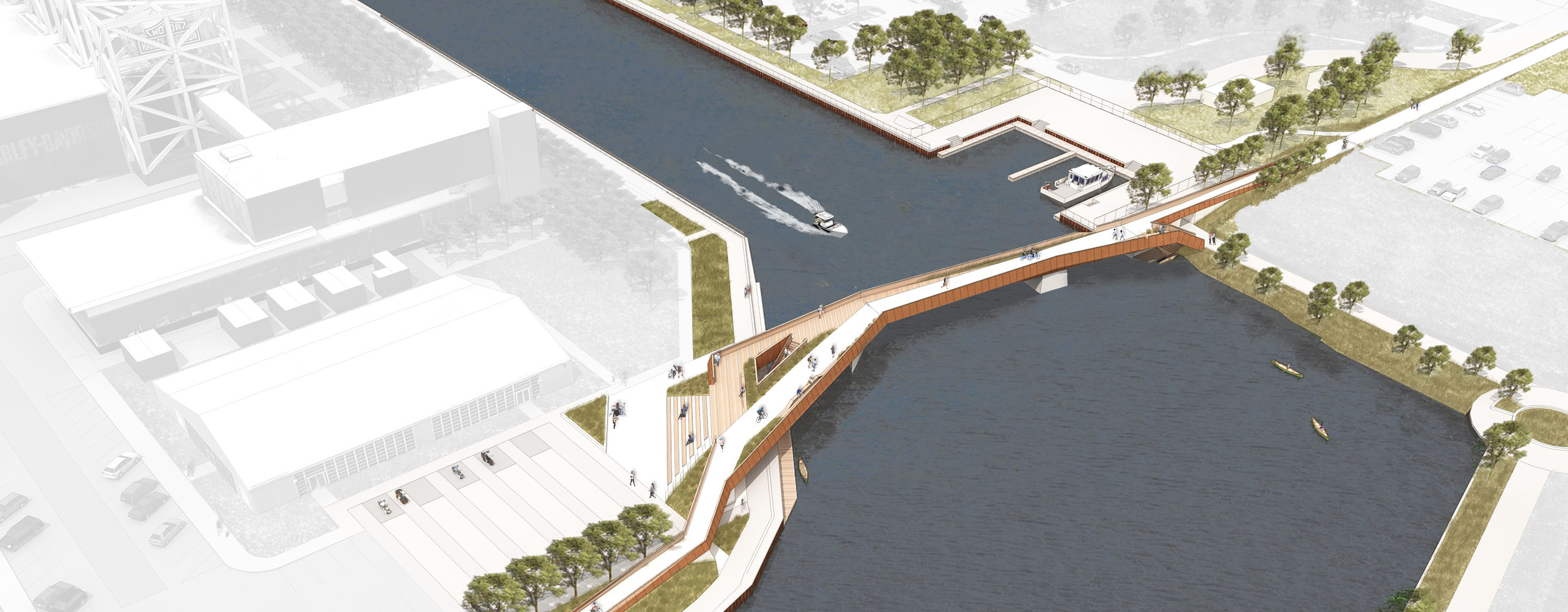
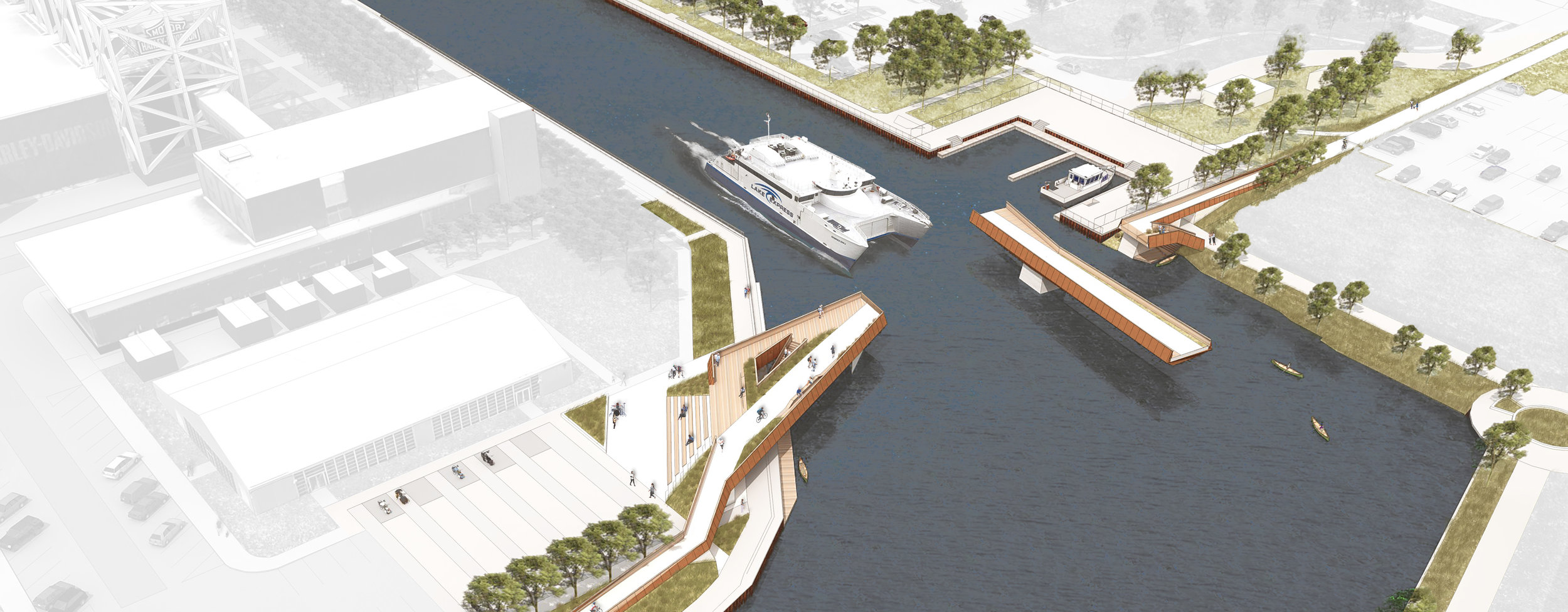
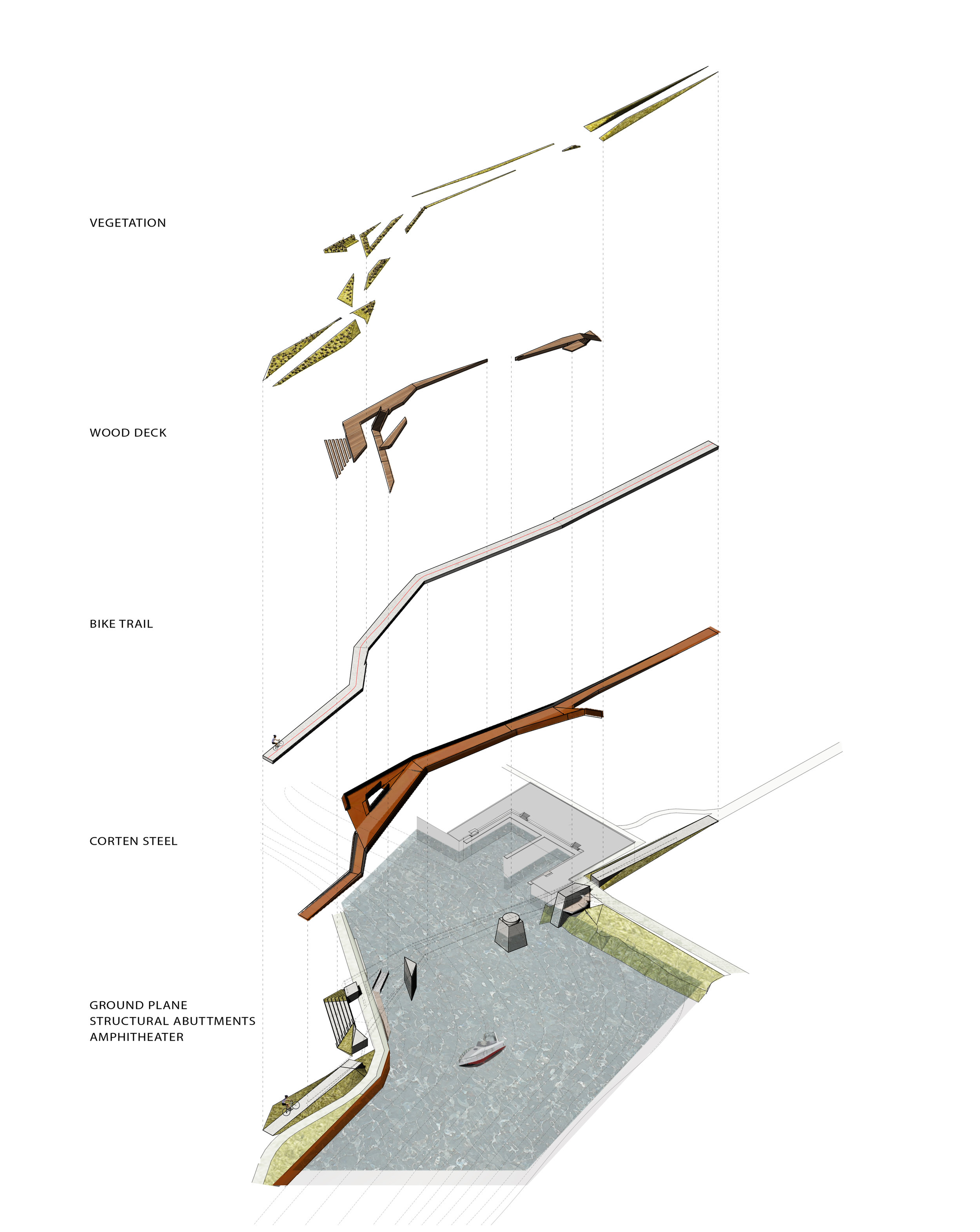
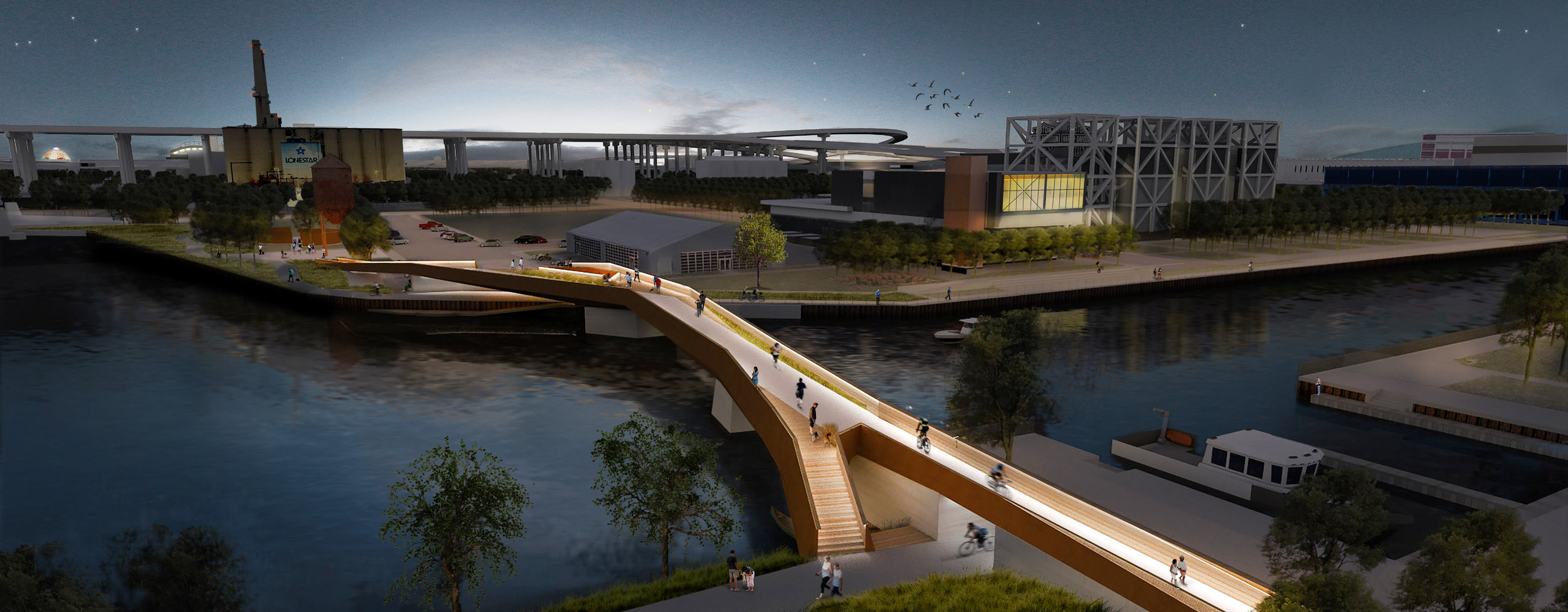
MENOMENEE CANAL BRIDGE
MILWAUKEE, WI
Whether architecture imitates the city, or the city imitates architecture, remains an unresolved, yet productive, disciplinary dilemma. This project for a pedestrian bridge over the South Menomonee Canal considers this predicament at a critical urban juncture — the disconnect between the Menomonee Valley and the Milwaukee urban core. If the fluidity of the pedestrian scale imitates the behavior of the city, could the city return the favor?
In Baroque music, imitation and form approached closest proximity in the fugue, a technique to overlap self-similar melodies. Because of its capacity to synthesize form and expression, the fugue’s longstanding relevance offers rules of imitation and variation worth considering to address the problem at hand.
Over its 250-foot span, the newly proposed swing bridge condenses several paths of pedestrian and bicycle circulation into a vibrant network of moving bodies. Along the bridge’s continuous contours, new adjacencies — between passage, exchange, and spectatorship — represent counterpoints between circulation and gathering. Just as the bridge embodies these paths, so too does pedestrian behavior reflect automotive and maritime transport that today define Milwaukee, a city whose contemporary redevelopment can appear dissonant with its post-industrial past. Here, woven steel and wood become the architectonic pieces of a fugue’s melody, making larger circulation networks tangible, and using the pedestrian scale to interrogate a kind of music sounding at the urban scale. In its promenade, the project operates in the gap Colin Rowe once described between “the ideal world and the too human exigencies of realization,” a gap over which “the bridging must be as competent and compelling as the construction of a well-executed fugue.”[1]
[1] Colin Rowe, The mathematics of the ideal villa, and other essays (Cambridge, Mass.1976). p. 14